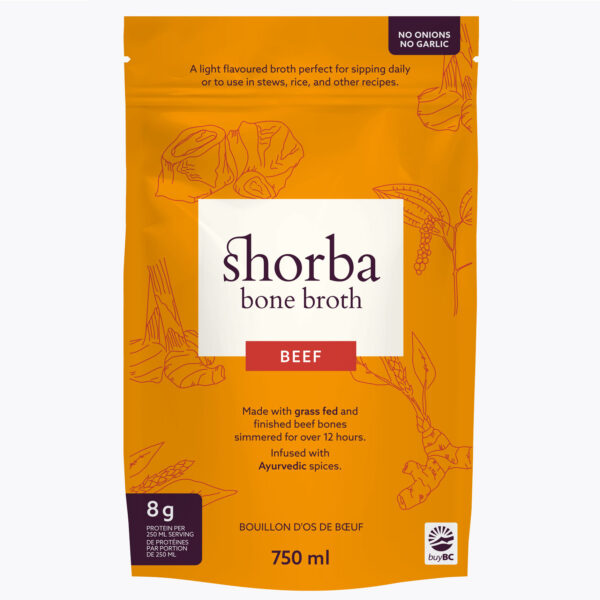The Ultimate Overview to Making and Appreciating Organic Bone Broths at Home
Bone brew has actually obtained interest for its numerous wellness benefits and cooking flexibility. Crafting natural bone brew in your home allows individuals to manage the top quality of components, making sure a nourishing result. Comprehending the selection of bones, important flavor components, and correct cooking techniques is vital. As the process unravels, one might ask yourself exactly how to boost their broth beyond the essentials and include it right into daily meals for boosted flavor and nourishment.
Understanding the Health And Wellness Benefits of Bone Broth
Bone brew has actually been a staple in numerous foods for centuries, its health benefits have acquired significant attention in current years. Rich in collagen, amino acids, and minerals, bone brew is usually promoted for its potential to support joint health, boost digestive tract function, and improve skin elasticity. The gelatin originated from cooked bones might help food digestion and help seal the intestine lining, potentially relieving problems like leaky intestine syndrome.Furthermore, the visibility of nutrients such as glucosamine and chondroitin may add to minimized swelling and pain relief in joints. Additionally, bone brew is hydrating and can serve as a nourishing base for stews and soups. Lots of proponents likewise assert that it improves the body immune system, thanks to its mineral account. Generally, the resurgence of interest in bone brew is connected to its regarded ability to advertise overall health and support different physical features.
Picking the Right Bones for Maximum Flavor and Nutrition
What variables should one take into consideration when picking bones for brew preparation? The kind of bones made use of considerably impacts both taste and dietary value. First, it is crucial to select bones that include a mix of marrow bones, joint bones, and meaty bones. Marrow bones provide abundant flavors and healthy and balanced fats, while joint bones contribute collagen, enhancing the brew's nutritional profile.Additionally, sourcing bones from pasture-raised or grass-fed pets assurances greater high quality and even more nutrients, as these pets are commonly healthier. The quality of the bones is additionally important; choosing bones from neighborhood butchers or farmers' markets can assure ideal taste. Bone dimension matters also; larger bones launch even more jelly, leading to a richer broth. Considering the type of animal-- fish, poultry, or beef-- can affect the last preference, allowing for versatile broth options tailored to specific preferences.
Vital Ingredients for a Savory Bone Brew

Quality Bone Choice
The foundation of a flavorful bone broth hinges on the cautious selection of high-grade bones. Sourcing organic, pasture-raised or grass-fed bones is important, as these alternatives are more probable to be without damaging additives and provide premium nutrients. Varieties such as chicken, beef, or lamb bones each give distinctive tastes and health advantages. Bone types, consisting of marrow bones, knuckle bones, and oxtails, contribute jelly and collagen, boosting the broth's structure. Picking bones with a mix of meat and connective tissue can also add richness and depth. In addition, selecting bones with visible marrow ensures a nutrient-dense brew, boosting the total high quality. Ultimately, investing time in top quality bone choice prepares for a scrumptious and nourishing broth.
Aromatic Flavor Enhancers
Selecting high-grade bones establishes the phase for a abundant and healthy bone broth, yet it is the enhancement of aromatic flavor enhancers that truly raises the meal. Active ingredients such as onions, garlic, and carrots not just pass on sweetness but additionally contribute depth to the broth. Fresh natural herbs like parsley, thyme, and bay leaves add a great smelling note, while seasonings such as black peppercorns and cloves present heat and intricacy. Furthermore, including a sprinkle of apple cider vinegar can help essence minerals from the bones, improving the broth. These taste boosters create a harmonious blend, changing an easy broth into a full-flavored structure for sauces, soups, or stews, making it a functional part in any kind of cooking repertoire.
Step-by-Step Guide to Making Bone Brew in your home
Developing bone broth at home can be a satisfying culinary undertaking that boosts both taste and nutrition in numerous recipes. To start, one have to pick high-grade bones, preferably from organic or grass-fed resources. Toasting the bones at 400 ° F for concerning half an hour can intensify the taste. Next off, transfer the roasted bones to a big pot or slow stove and cover them with chilly water. Including a sprinkle of vinegar aids essence minerals from the bones.Include aromatic vegetables like onions, carrots, and celery for added deepness, along with natural herbs and flavors as preferred. Bring the mixture to a boil, after that decrease to a simmer. It is vital to allow the broth simmer for a minimum of 12 hours, however much longer is my website more effective for maximum splendor. Ultimately, strain the broth with a fine-mesh screen and store it in airtight containers, prepared to elevate meals with its healthy essence.

Tips for Perfecting Your Bone Brew Simmer
While simmering bone brew, maintaining the ideal temperature and timing is vital for accomplishing a rich and delicious outcome. A mild simmer, ideally in between 190 ° F and 210 ° F, assists remove maximum nutrients and tastes without steaming, which can make the broth cloudy. It is a good idea to check the pot carefully, adjusting the warmth as needed to preserve this simmer.Timing is additionally important; a longer simmer, usually varying from 12 to 48 hours, permits for much deeper taste removal and collagen launch. For hen bones, a 12 to 24-hour simmer suffices, while beef bones take advantage of longer food preparation times.Additionally, skimming any type of foam or pollutants that rise to the surface throughout the very first few hours can improve the broth's quality and preference. Making certain the pot is covered during simmering aids to maintain moisture and increase the flavors, making for an extra satisfying end item.
Imaginative Ways to Utilize Bone Brew in Your Food preparation
Integrating bone broth into numerous dishes raises both flavor and dietary value. Chefs and home chefs alike locate that using bone brew as a base for soups and stews boosts deepness and splendor, changing straightforward recipes into passionate dishes. It can likewise be employed in risottos, where the brew changes water, permitting the grains to absorb its mouthwatering essence.Additionally, bone broth functions as an excellent cooking liquid for grains like quinoa or rice, infusing them with nutrients and taste. For an added spin, it can be used in braising meats, causing tender, savory end results. Also sauces gain from a splash of bone brew, enhancing their taste profile.Moreover, bone brew can be included into smoothie mixes for an unexpected wellness boost, providing protein and nutrients without jeopardizing taste. These creative applications display the convenience of bone broth in everyday cooking, making it an important kitchen staple.
Keeping and Protecting Your Home Made Bone Brew
Correct storage space and preservation of homemade bone broth is essential for preserving its taste and nutritional benefits. Freezing methods and refrigeration finest techniques play an important duty in expanding the broth's life span. Recognizing these approaches can help assure that the broth stays delicious and secure for future usage.

Freezing Techniques Described
Cold methods are important for effectively keeping and protecting home made bone brew, ensuring its abundant flavors and nutrients remain undamaged for future use. To freeze bone broth, it is suggested to allow it cool completely before transferring it to storage space containers. Glass jars, silicone mold and mildews, or sturdy fridge freezer bags appropriate options. When using jars, leave room on top for development throughout cold. Portioning the brew right into smaller sized quantities permits for simple thawing and lessens waste. Tag containers with the date and contents for easy recognition. For peak top quality, eat the icy broth within 3 to six months - Chicken Broth. Thawing can be performed in the refrigerator or by utilizing a microwave, making sure that the broth is warmed completely prior to consumption
Refrigeration Best Practices
While lots of concentrate on freezing as a technique of conservation, refrigeration also plays a crucial function in storing homemade bone brew effectively. When cooled, bone brew need to be moved to airtight containers, assuring very little air direct exposure to avoid putridity. It is advisable to refrigerate broth within 2 hours of cooking index to preserve its high quality. Typically, homemade bone brew can be kept in the refrigerator for as much as 5 days. Classifying containers with dates can help track freshness. For peak flavor and security, brew should be reheated to a moving boil prior to usage. If longer storage is required, freezing continues to be an outstanding choice, yet correct refrigeration techniques ensure that bone broth remains nourishing and scrumptious for temporary use.
Regularly Asked Questions
Can I Make Use Of Frozen Bones for Making Bone Brew?
The inquiry of using icy bones for bone brew develops regularly (Bone Broth Delivery). Professionals concur that frozen bones can be used effectively, yet they should be thawed before cooking to ensure suitable flavor and nutrient removal
How Much Time Can I Store Homemade Bone Broth?

Is It Safe to Reheat Bone Broth Numerous Times?
Reheating bone broth numerous times can position security worries - Bone Broth Delivery. Each reheating cycle enhances the threat of microbial development. It is suggested to reheat just when and store any kind of leftovers quickly to ensure safety and high quality
Can I Include Vegetables to the Brew for Flavor?
Including veggies to broth boosts taste and dietary worth. Typical choices include carrots, onions, and celery. The veggies instill their significance into the broth, producing a richer and more mouthwatering end product.
What's the Best Means to Thaw Icy Bone Brew?
To defrost icy bone brew, one can put it in the refrigerator over night, utilize a microwave on low heat, or submerge the sealed container in warm water, making certain also thawing without compromising flavor or nutrients. It is vital to choose bones that include a mix of marrow bones, joint bones, and meaty bones. Marrow bones provide rich tastes and healthy fats, while joint bones add collagen, improving the brew's dietary profile.Additionally, sourcing bones from grass-fed or pasture-raised pets assurances greater high quality and even more nutrients, as these pets are commonly much healthier. Bone types, consisting of marrow bones, knuckle bones, and oxtails, contribute gelatin and collagen, improving the brew's structure. Selecting top quality bones sets the phase for a abundant and healthy bone broth, but it is the enhancement of aromatic flavor boosters that truly raises the dish. Even sauces benefit from a dash of bone broth, enriching their taste profile.Moreover, bone brew can be integrated right into shakes for an unexpected health and wellness boost, providing healthy protein and nutrients without compromising taste.
Comments on “Is It Worth It? A Nutritionist Breaks Down Beef Broth's Real Health Value”